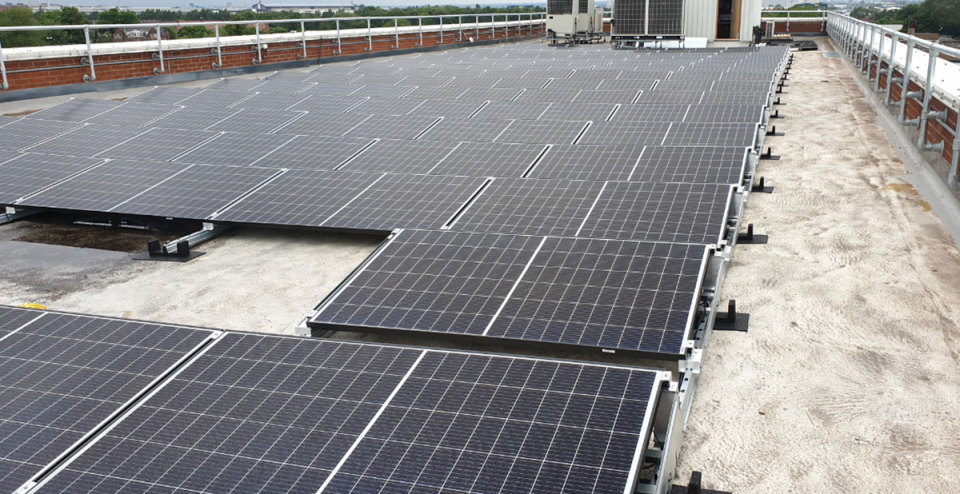sustainability green development solar panelling
By Bruntwood

Sustainability has always been a key area of focus, ever since the business was founded over 40 years ago, Bruntwood has restored old buildings instead of rebuilding, invested in creating inclusive communities and worked with organisations fighting to create a better, greener planet.
Of course, as the climate crisis worsens, we have placed more and more emphasis on the need for us to act sustainably in all areas of our business. Installing solar paneling across our portfolio is just one element of our sustainability efforts as a business and we’re pleased that we were able to continue with the Solar PV installation programme throughout the lockdown period, completing on site at Lancastrian, Booths Park and Sale Point. Solar power is one of the world’s most important renewable energy sources, coming in third just after hydro and wind power. The buildings mentioned above were all selected for the first phase for solar energy due to the volume of roof space available and not suffering from over shading.
It isn’t something that is new to Bruntwood, as we have solar panelling on many of our buildings already. But it is also one of the first retrospective energy solutions we have committed to implementing as a business. The technology has been tried and tested, so we’re comfortable with how it works. And, of course, having a lot of commercial buildings with large flat roofs means that they lend themselves well to solar paneling.
This is just one part of the puzzle in Bruntwood’s steps to becoming net zero carbon by 2030. What we are ultimately trying to achieve through this project is the onsite production of electricity. This will be done by linking back to batteries, like the TESLA battery at MSP, so that we can store the energy and use it when needed for environmental and commercial reasons too. It is crucial that we play our part, not only to reach our own NZC targets, but to help our regions meet theirs, too. The built environment contributes to around 40% of the UK’s total carbon footprint, of which almost is created by the energy used within buildings. So, for us as a business, that means we need to impact change through our customers actions as well. The rest of our emissions come through the manufacturing process on new builds. That includes the creation of materials, the transportation of those materials to construction sites, and the actual construction process. Sustainability is high on the agenda for our business and there are a number of workstreams in place that are looking how we effectively manage our sustainability projects and we best reach our Net Zero Carbon targets. We’ll be explaining more around the work that they’re doing very soon.
Stay Connected!
Sign up to our newsletter for the latest news, updates and offers.